VANCOUVER — In these most disconnected and fractured of times, when our most basic instinct of reaching out to others in an act of the heart is so often compromised by the frustration of new realities, here is a story about finding connection.
“Early in COVID, I would be out on my walks… I was doing these two-and-a-half-hour walks down by Spanish Banks,” explains UBC Thunderbirds head men’s basketball coach Kevin Hanson of his frequent sojourns this past March.
“At first I’d be listening to music, killing time,” he continues. “But then I just started to think ‘No, I want catch up with people.’ So I would call up friends and alumni of the program. We’d talk for an hour. We’d reminisce. They would tell me stories.”
On a purely one-to-one level, Hanson came to treasure these moments as a sort of basketball balm for the soul.
Yet he couldn’t shake the feeling that, in a broader context, these were stories with a more universal message… stories which not only informed and celebrated a proud past, but so seamlessly brought old and young together in single voice at a time when isolation and fear had become the universal default.
“I had a little bit of a brainstorm,” chuckles Hanson. “I just said to myself ‘I have to share these stories.’”
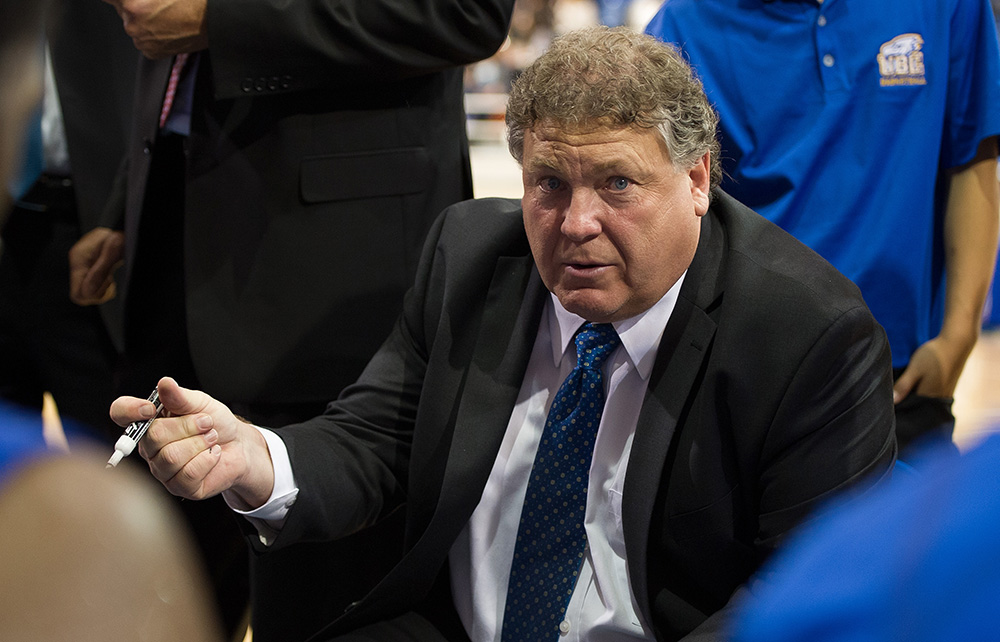
And so since launching in early April, Hanson, with the help of UBC’s Manager of Sports Information Wilson Wong, has thus far produced 21 editions of the Thunderbirds Men’s Basketball Alumni Update, a mostly-weekly e-mail sent to friends and alumni of the program in which past players, coaches and managers have written in essay form about not only where their post-UBC journeys have taken them, but how specific moments from their time in blue-and-gold have continued to impact their lives.
“I just said ‘Write a profile of what you’ve been doing since you left UBC’ and all of a sudden people started telling stories,” Hanson continued. “I thought it was gold.
“I have also found it all to be very therapeutic for me,” added Hanson, who 20 seasons into his Thunderbirds’ head coaching career has more regular-season conference victories than any coach in Canada West men’s history.
Today, as we celebrate the reminiscences of some 58 (and counting) past Thunderbirds (full list below), something wonderfully unintentional has also happened.
Through their collective efforts, much of what had previously existed only as word-of-mouth banter at team reunions has now gained the permanence of recorded history.
Suddenly, in a time of disconnection, we can feel any even greater connection to the characters of every era who have donned the colours of a program which can trace its roots all the way back to 1909.
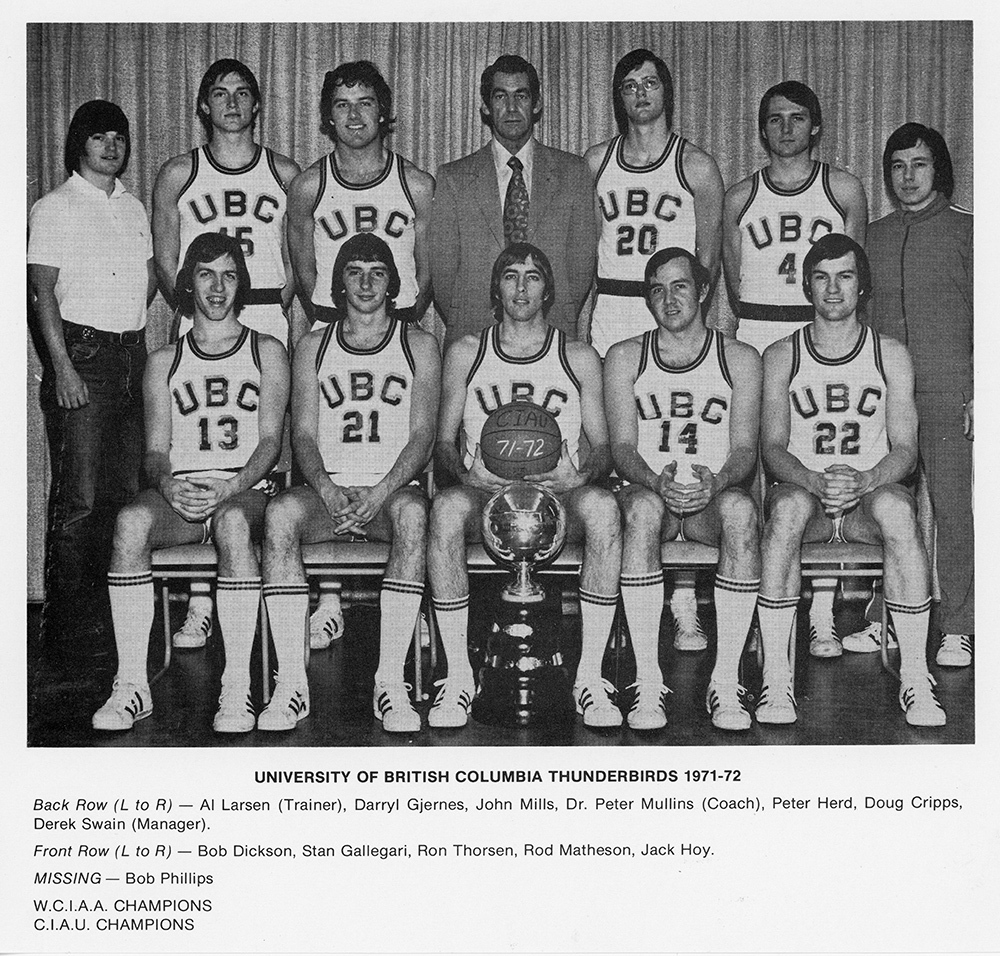
WHEN POINT GREY WAS A HOOPS TITLETOWN
As much as we may have thought we knew about an era of UBC men’s basketball which enjoyed its peak with two CIAU national titles (1970, ’72) in three seasons, the remembrances of many from that era, through the Thunderbirds Men’s Basketball Alumni Update, breathe a new life into its principle characters, including the late Dr. Peter Mullins, whose 20-year reign at the helm of the ‘Birds senior varsity followed what had already been a storied career as not only the captain of the Washington State men’s basketball team, but back in his native Australia, as an Olympic decathlete and captain of his nation’s Davis Cup junior tennis team.
So far reaching was Mullins’ UBC basketball coaching career that although he first helmed the ‘Birds senior varsity for the 1962-63 campaign, one of the final acts of his final season as head coach (1981-82) was to recruit current head coach Hanson out of high school.
Taken as a collective, the remembrances of those closest to him paint a defining portrait of one of the UBC athletic nation’s most iconic coaches.
“Peter was a disciplinarian who coached by principles,” wrote Steve Spencer, who played under Mullins from 1963-66. “Mental toughness was instilled via his drill teaching. He believed that athletes significantly improved only when their decision-making did. We did not learn plays, per se. Practice drills, particularly early in the season, were situational game aspects — one-on-one, two-on-two, fast break (which started every practice), pressure lay-ups, defence away from the ball, and press drills, etc. Virtually all drills were competitive.”
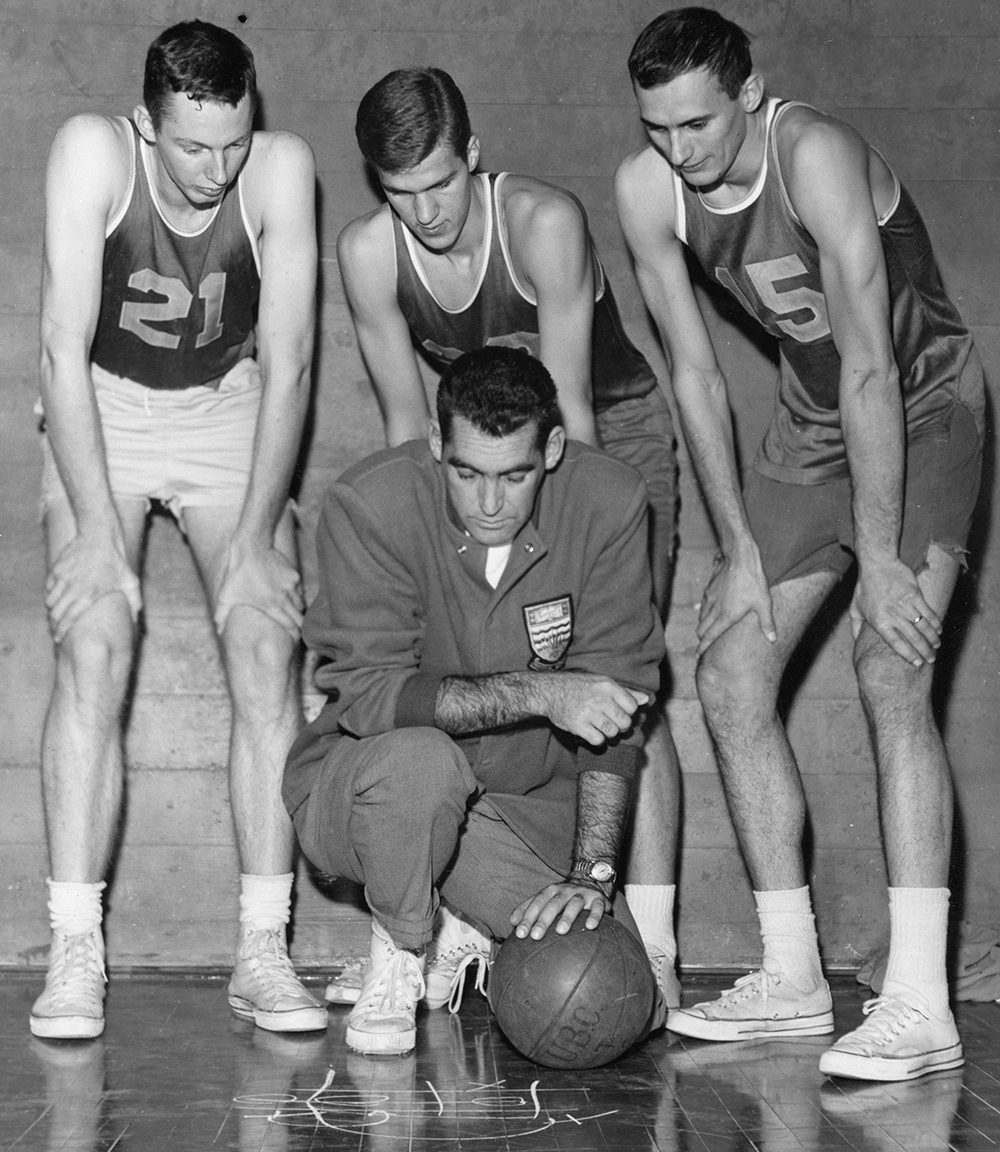
Although not written as part of the alumni updates, Hanson remembers the way in which Mullins conducted try-outs in each of his seasons, breaking the War Memorial Gym floor into three courts, then stocking each in a most unique way.
“In Grade 10 (1979-80), I went out for a school campus tour and we were watching tryouts, and there were three cross-courts going,” remembers Hanson, at that time a student-athlete at North Delta’s Seaquam Secondary. “Someone told us ‘This court is for people below six feet, that court is for 6-feet to 6-6, and that one is for 6-6 and above’, and that basically all the 6-6 guys were on the team. That is what Dr. Peter Mullins did. I was there to see it, and he was still doing that when I went on my recruiting visit in Grade 12.”
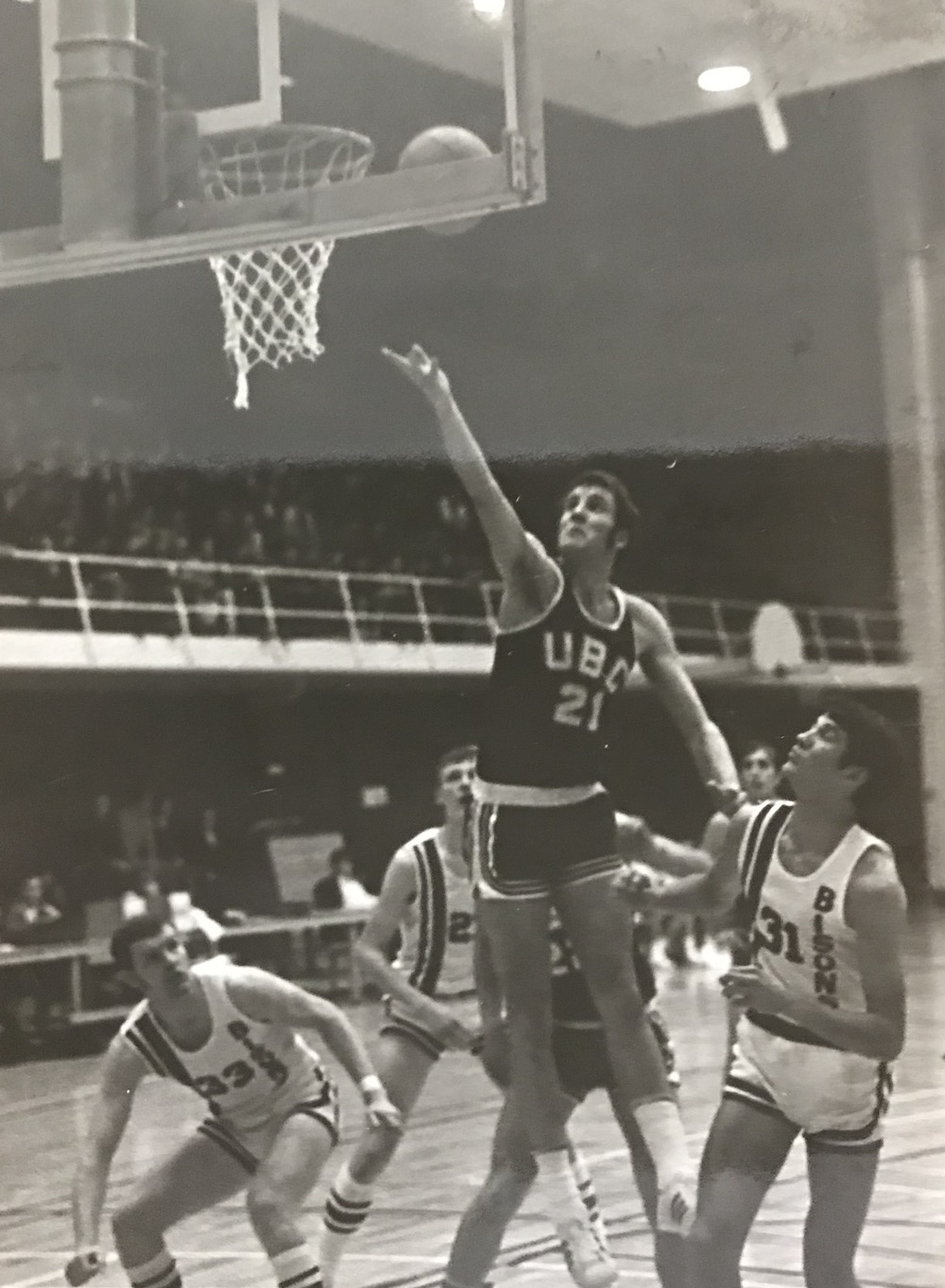
Reports Derek Swain, one of the team’s managers from 1971-73: “During games, I occupied both the best and the most dangerous seat in the house: On the bench beside Peter. It was dangerous because Peter’s displeasure with game performance was expressed through his famous two-foot stomp which began with rapidly raised elbows zooming close to my nose.”
And yet Dr. Mullins, who passed away in 2012 at the age of 86, was not above a little self-deprecation, a trait one of the leading lights from UBC’s 1970 national champions not only remembers well, but these days literally wears on his sleeve.
“Peter was once asked by reporters how much he had contributed to the team’s success and he said in jest ‘Two-percent,’” writes Derek Sankey, the Lord Byng grad who played for UBC from 1966-71 and later with the Canadian national team.
“His next coaching jacket, therefore had ‘2%’ on the sleeve,” continued Sankey. “When Peter passed, I inherited his jacket which brings back memories whenever I pull it out of the closet.”
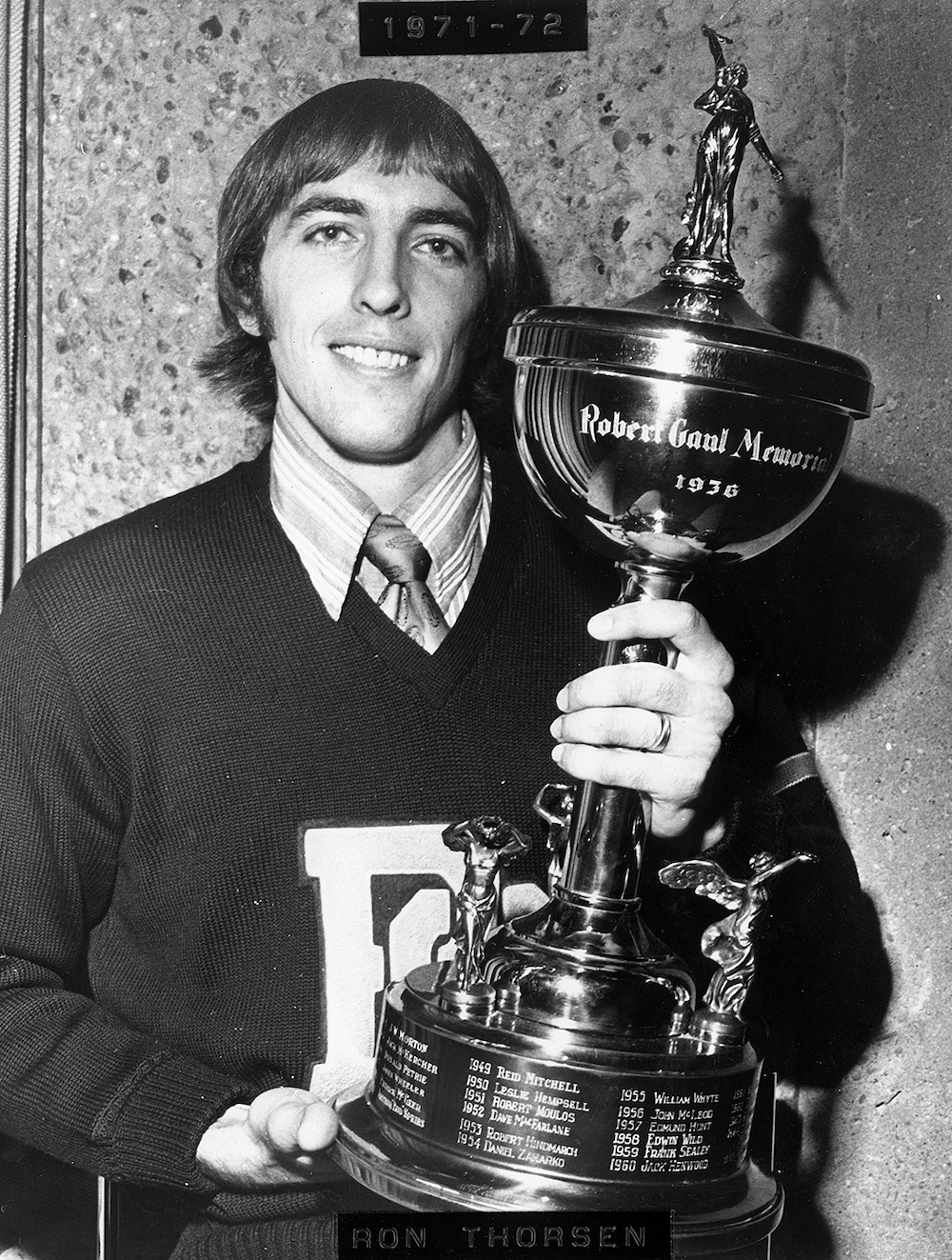
WHEN THOR CALLED WAR MEMORIAL HOME
When Prince George’s Ron Thorsen joined Mullins’ Thunderbirds in the fall of 1967 after winning back-to-back B.C. high school boys championship tournament MVP awards, the team rules stated that freshmen were required to spend their first university season playing with the junior varsity team.
Yet for Thorsen, who passed in 2004 at the age of 56, and is universally regarded as one of, if not the greatest UBC men’s basketball player in program history, there would still be plenty of eligibility left to leave a legacy.
And when the dynamic scoring point guard was eulogized earlier this month in the Thunderbirds Men’s Basketball Alumni Update through the recollections of those who both watched and played alongside him a half-century ago, it was almost like the essence of his magical presence was being archived for future generations to appreciate.
Tony Gallagher, the longtime former columnist with The Province, who covered the 1972 national final for that publication, lovingly dug out his cub reporter’s cap earlier this month for an appraisal which rightly allows Thorsen’s talents to be savoured in context with the current era of the game.
“He was about six-three and could penetrate virtually any defence which generally collapsed to try to stop him,” wrote Gallagher. “But it seemed no matter how tight and low down they gathered, he could get through or get to within range where he wasn’t going to miss a jumper from inside 12 feet. He could dribble the ball through the gaps of his teeth at full speed and pass with either hand on the money to a cutting teammate on the fast break. Hell, his right hand was indistinguishable from his left. Mostly when the defences were back and set, he penetrated and kicked out to the likes of Derek Sankey, Jack Hoy or Stan Callegari, all of whom could fill it up from outside. He could also make that little short pass inside a la Steve Nash to Terry MacKay or Bob Molinski or in ’72 to John Mills and Darryl Gjernes for hoops which resulted in those national titles. Every time a game started you’d think to yourself ‘…here we go.’And I don’t mean ‘we’ in terms of UBC. No, the entertainment was about to begin.”
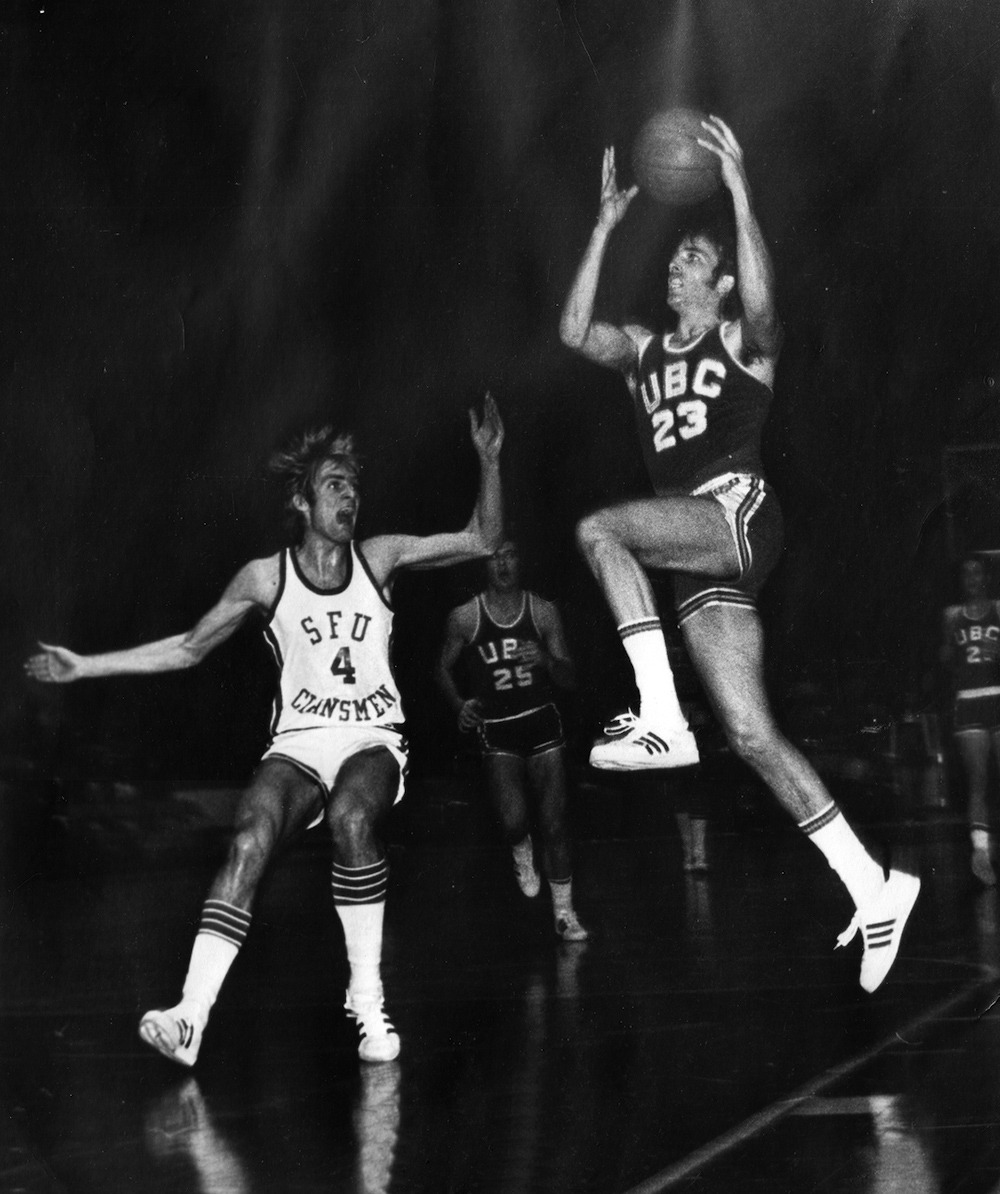
Here’s another, this one courtesy of former teammate Peter Herd (1970-73), who like Gallagher marvelled not only at Thorsen’s handle but at passes delivered with a presence which was both sonic and surgical: “It was a privilege to share a basketball court with Ron Thorsen. He was the smoothest, quickest guard I ever played with and one of the best I’ve ever seen. His large hands turned a basketball into an extension of himself. He could dribble behind his back as fast as he could run. Like all great passers, Ron saw the whole court, even in traffic. If you were open, he’d get you the ball. He could fire a bullet that arrived softly at chest height, as if by magic. You would find yourself holding the ball and wondering how it got there. His passes came from everywhere and nowhere. He had eyes in the back of his head. Ron could beat anyone in the country and find the open man when the help came. He made his teammates look good, asking only that we have our hands ready at all times or risk looking like idiots. It took me two years to really learn how to play with him.”
How about that?
“His passes came from everywhere and nowhere.”
Herd delivered that phrase as deftly as a Thorsen pass, and perhaps decades from now, when UBC’s greatest-ever players are debated, that quote becomes his signature description.
Thorsen, who was drafted 209th overall by the Buffalo Braves in the 1973 NBA draft, later coached the UBC Thunderettes to the 1974 CIAU women’s national basketball title.
John Mills, one of B.C.’s true lifelong basketball ambassadors, and a key member of both of UBC’s national title teams, wrote with eloquence as he talked about both his coach and special teammate.
“The two most important contributors to the Thunderbird teams of the early 70’s are no longer with us,” he began. “We were lucky to have Dr. Peter Mullins as our coach when he was at the peak of his game. Sadly, our captain Ron Thorsen, the best player of his generation, left us much too soon. He made our teams great and all of us better. His absence is keenly felt whenever we gather.”
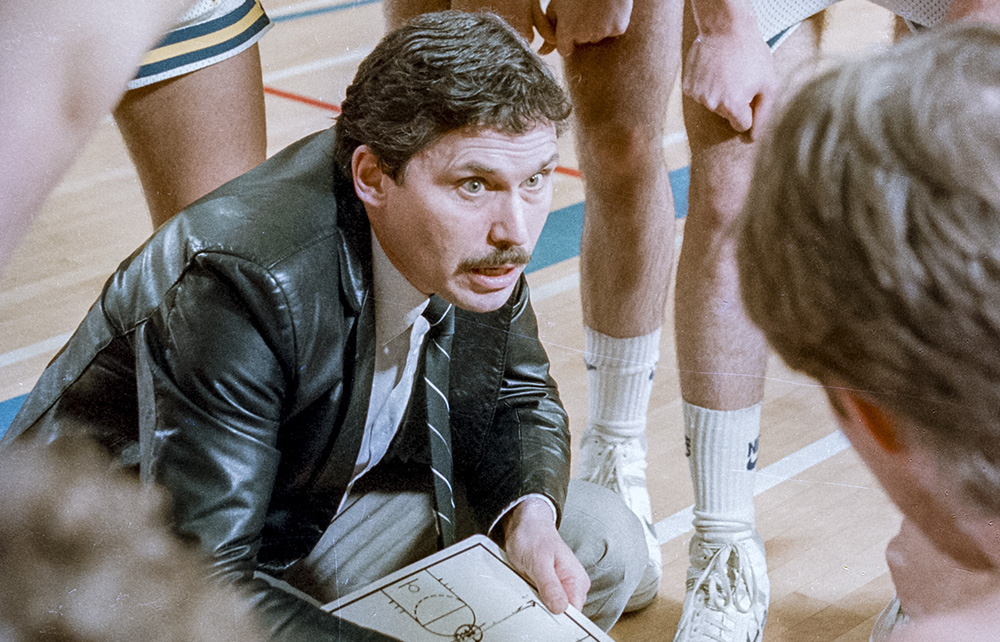
RIFFING WITH BRUISER
There was a feeling of generations uniting when former UBC head coach Bruce ‘Bruiser’ Enns checked in with the Thunderbirds Men’s Basketball Alumni Update in early June, particularly when he addressed a pair of players many feel are the two best in program history: Thorsen and the mop-topped guard he himself would coach in Vernon’s J.D. Jackson.
“Ron and J.D. were both left-handed, right-brained thinkers who loved to pass, but were known for their scoring and exceptional creativity on the court,” reported Enns, who later regaled friends and alumni of the program by recalling the time he watched the 1970 UBC team on its road to the national title, beating Manitoba in that season’s Western final at War Memorial Gym. All of this took place just a few years before he would become Winnipeg’s head coach and some 15 years before he became the UBC head coach.
“The Birds were playing in a Western Canada playoff game against who we Winnipeggers thought was the top team in the country, the Manitoba Bisons,” began Enns, who eventually started a 15-year run as UBC head coach in 1985-86 after coaching the Wesmen from 1973-85. “I’ll never forget the game, nor the individual Birds that together immediately became my all-time favourite university team. Peter Mullins, a man who later became a respected friend, was the stern looking coach who seemed never to make a mistake. Starting alongside the huge (6-7) centre Terry MacKay, were Bob Molinski, Derek Sankey, Ron Thorsen and Alex Brayden.”
Of course Enns proved that he too could bring no end of talent to War Memorial Gymnasium over the course of his time in Vancouver.
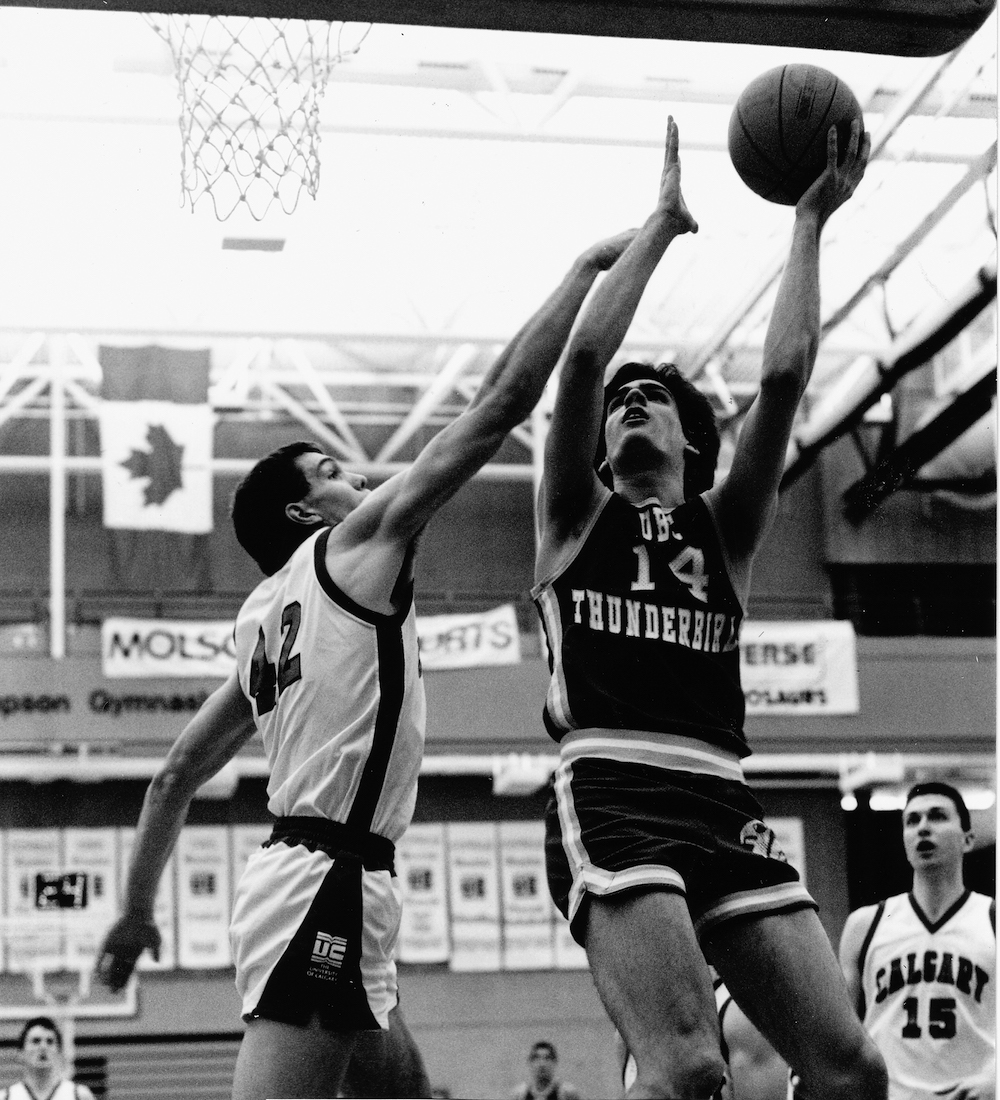
Wrote J.D. Jackson, who later went on to forge a top-flight international coaching career of his own in France: “Thirty-five years ago as a skinny, pimply 17-year-old, Bruce Enns brought me to War Memorial and introduced me to Kevin Hanson, Paul Johansson, and all my other teammates. Little did I know they would show me what it was to compete, what camaraderie meant, and what leadership really entails.
“Thunderbird basketball isn’t always in the spotlight like certain NCAA programs or professional teams, but what the program has is a true legacy of core values that speak to me. I’m proud of the Thunderbird tattoo I carry.”
The quirky parts of Enns’ persona remain embedded with his former players.
Adds former Vancouver College point guard Gerald Cole (1995-98) of his time playing for Enns: “I always loved Bruce’s perspective on the game and how he saw the beauty in it. I recall the metaphor he would frequently use to describe the perfect basketball team playing in harmony, that of a jazz quintet: All highly skilled musicians (you need to build your skills individually before playing with others) playing together and riffing off one another to create beautiful music (effortless offence) all within a structure based on guidelines (keep the big and small triangle) and offensive standards (hands up, feet set towards the hoop at all times).
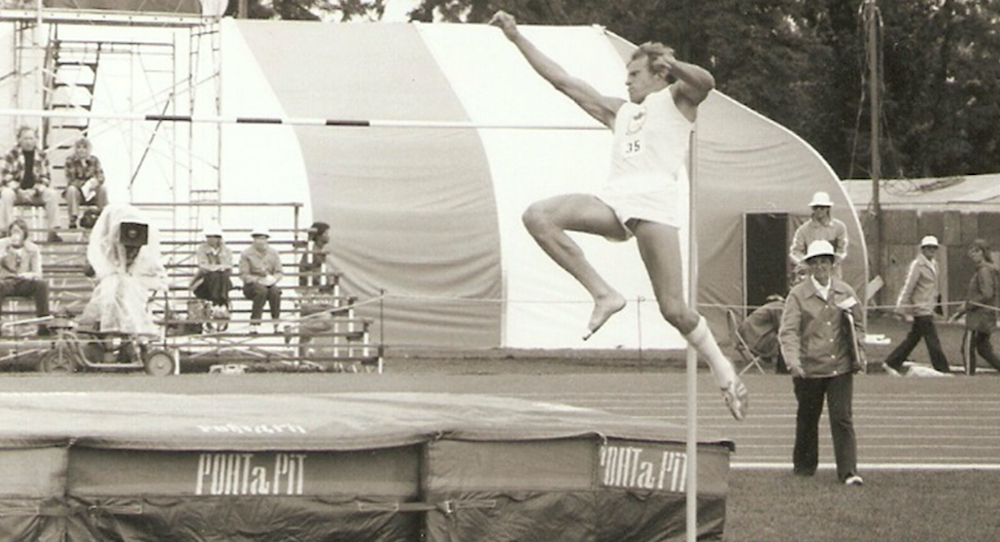
HISTORY SAVED IS HISTORY CHERISHED
It’s hard to know when to stop.
In fact the aforementioned represents but a fraction of the memories shared by 58 former players, coaches and managers.
You could write a book on John Hawkins (1968-71), a member of the 1970 championship team who in his day, was also Canada’s best high jumper.
In the lead up to the 1972 Munich Olympics (Yes, he competed there! “…we were sobered by witnessing the daylight hours of the Black September terrorist attack on the Israeli Team”), Hawkins took leave from the basketball team, but still made it to War Memorial to give his teammates a 10th man for scrimmages.
And quite hilariously, when the 1972 CIAU Nationals came to the Point Grey campus, about five months ahead of the Olympics, Hawkins was still helping his teammates in any way he could.
“My only other contribution was during the National Championships at UBC when I put on a dunk show on a side hoop between games and then told the waiting visitors dressed in civvies that ‘I wasn’t good enough for the team.’”
There have been so many other gems unearthed over the first six months of a project Hanson wants to keep going, including a pair of particularly insightful reminiscences from former ‘Birds about their teammates.
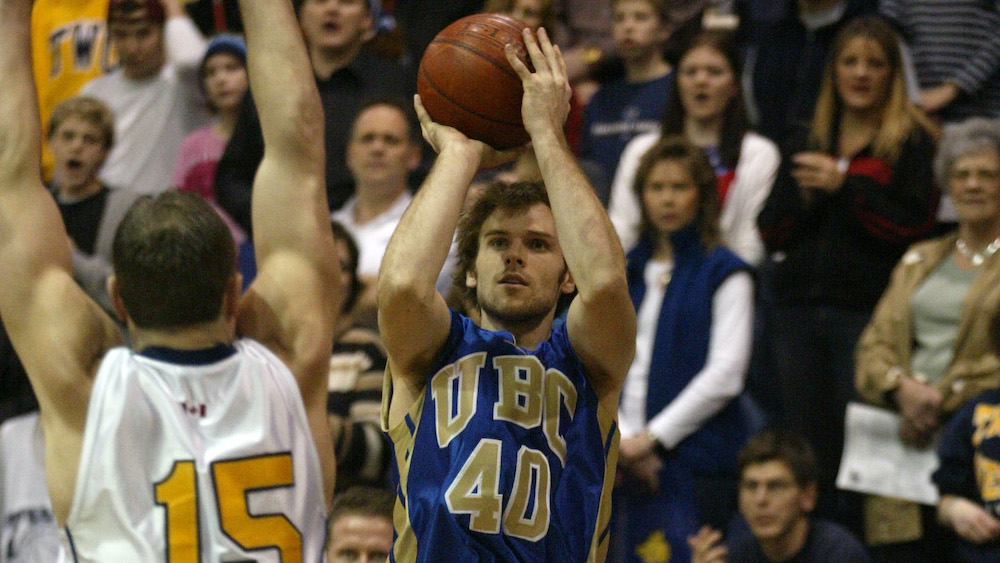
Sherlan John (1998-2001), a Capilano College transfer who wound up playing under both Enns and Hanson, verifies just how gutsy and Larry Bird-like former Richmond Colts’ standout Kyle Russell was over his UBC career, despite his physical pain.
“I will never forget Kyle Russell getting his ankles taped, almost cast-like, every practice and then for games …always amazed how hard he played… in pain, but just enjoyed playing basketball!” said John, the father of ex-SFU receiver Rysen John, who this past summer signed and went to training camp with the New York Giants.
Sherlan John has spent the past number of seasons helping in a coaching role with Vancouver’s Sir Winston Churchill Bulldogs where his younger son Milan is a rising talent at point guard.
And then there’s Neil Morrison (2003-05), a Terry Fox grad who, after two years away from the game, decided to try and walk-on with the ‘Birds as a forward.
“I remember the deep burn in my lungs and the fact that I was one of the last guys running,” Morrison wrote of battling to try and overcome his lack fitness that first day of tryouts for 2003-04 season. “I say ‘one of’ because I was not on my own. That first practice, I knew nobody, but by the end of practice I had a group of guys rooting for me and one right beside me, pushing me to the finish…”
Morrison will never forget the name of that player, a guy who was in his final year with the team and although not a player who saw a lot of minutes on the floor, was so highly-regarded as a character leader, that he served as one of the team’s captains.
“It was Jama Mahlalela, you might know him,” Morrison joked with pride of the Toronto Raptors’ assistant coach who is currently the head coach of Raptors 905, proving that first impressions can count for a whole lot.
“It’s so Jama, it just describes him to a T,” laughed Hanson. “At that stage of his career, he was already caring for other people. And Neil came out just hoping to make the team and he did. You know, everyone’s got their story and they’ve all enjoyed their chance to tell it.”
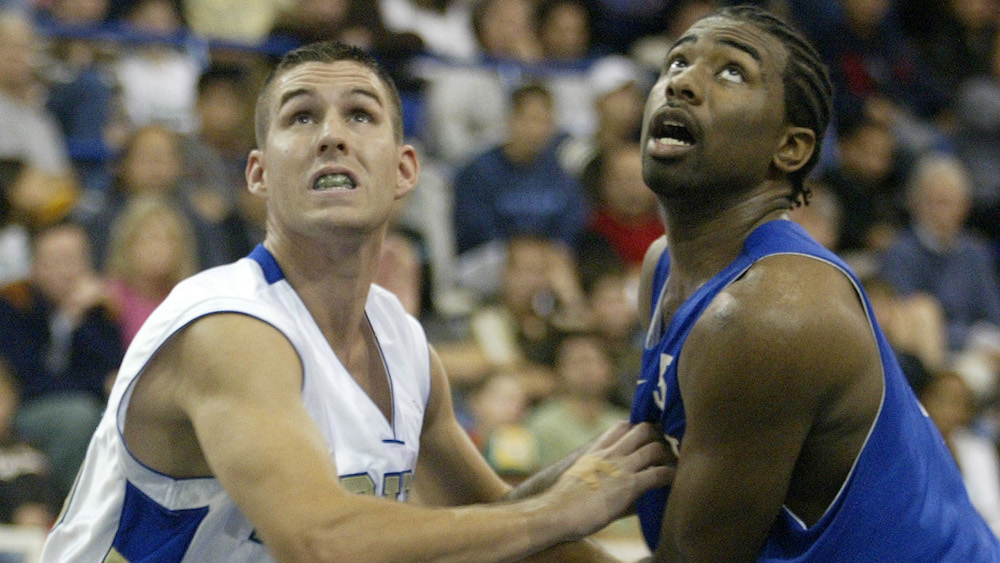
We’ll close out with the story of Peter Wauthy (2003-05), a hard-nosed defender who in these times of pandemic, credits his time with ‘Birds as helping him with his daily process of preparation on what is the largest stage of all.
“Coach Hanson and my experience in basketball have taught me the importance of preparation, focus, and purpose, which have helped me approach patient care as an ER physician,” says Wauthy, a St. John Brebeuf grad, who transfrerred to UBC from the former UCFV and these days works at Abbotsford Regional Hospital.
“The mental preparation from my basketball experience has paved the way for my pre-shift routine in the ER, especially during COVID,” wrote Wauthy. “Similar to pre-game routine, I take moments before my ER shift to get in the zone: To be prepared to have the strength, courage, and wisdom to be the best I can be; to listen to my patients; to address their concerns while respecting their values; to communicate openly to my team; to recognize that I have limitations and to reach out to consultants for guidance and support as needed; and ultimately, to provide the best care for my patients. Going through this routine, I feel prepared for any unpredictable task ahead as it helps me focus and carries me through my shift.”
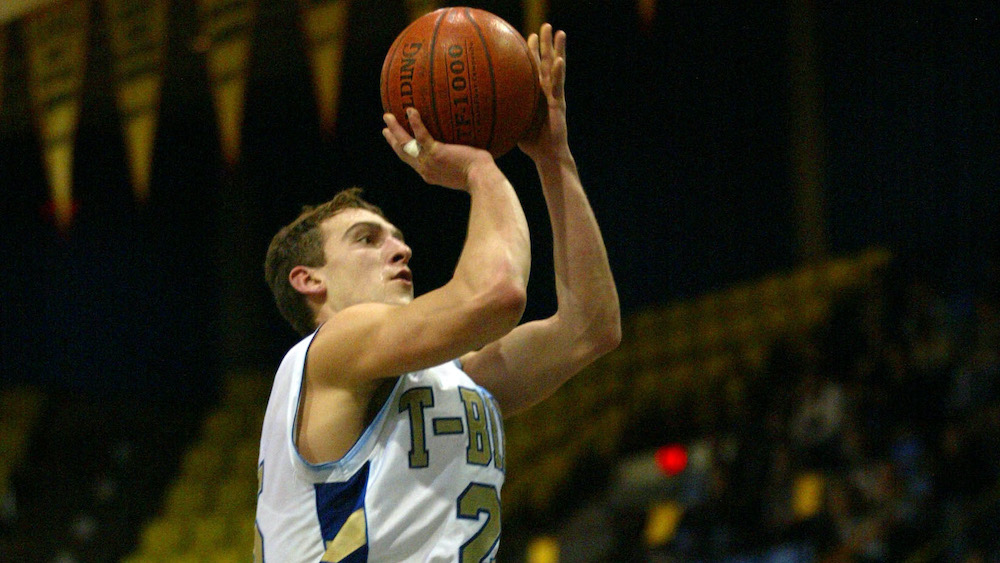
All of which brings us back to this past March, when a basketball coach decided to reach out for connection during this time of disconnection.
“It’s really snowballed and the stories have just gotten better and better… I mean Ron Thorsen playing on the JV team?” Kevin Hanson laughs.
“But where do you put it all?” he asks. “I would love to see it on our web pages. The names of all of our alumni are there, and you can click to search on a person, and all of a sudden their story and pictures show up.
“What I love the most is it’s like a documented history. It’s something that is invaluable, something that so often just gets lost in time. People finish with basketball and university and they all go their own way. They get married. They have kids. They find occupations. You lose contact.
“But, you know, because of what has happened through COVID… this has brought our entire alumni together.”
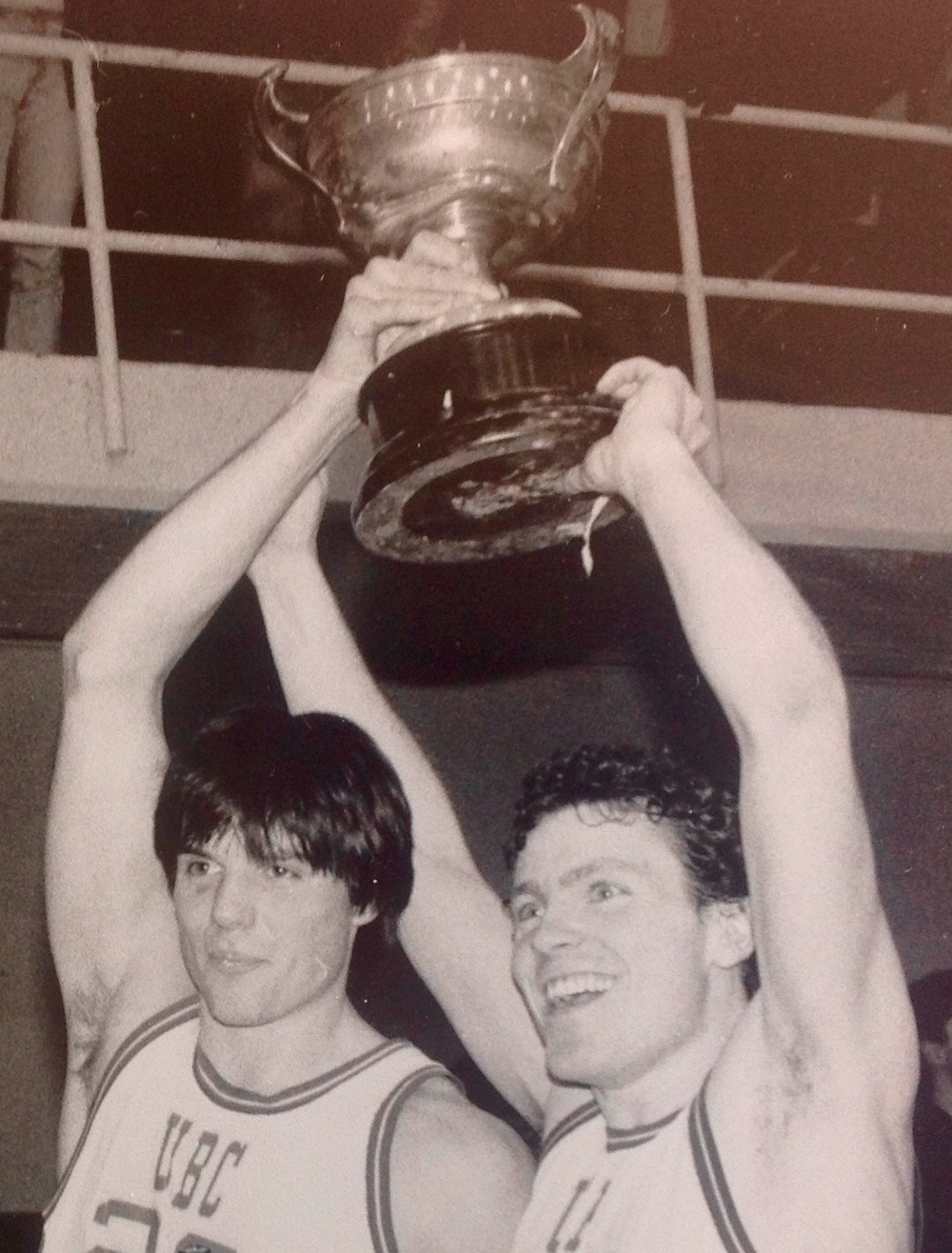
UBC’S STORYTELLERS (those who have contributed to the first 21 editions of the Thunderbirds Men’s Basketball Alumni Update)
Casey Archibald (2002-07), Balraj Bains (2006-12), Pasha Bains (2005-06), Eric Butler (1992-97), Kamar Burke (2009-12), Chad Clifford (2005-06), Axel Christiansen (1989-90), Derek Christiansen (1989-94), Paul Cohee (1988-90), Gerald Cole (1995-98), Brad Digby (1977-80), Chris Dyck (2006-09), Bruce Enns (1985-2000), John Hawkins (1968-71), Peter Herd (1970-73), Brian Host (1999-2003), Jack Hoy (169-73), J.D. Jackson (1986-1992), Phil Jalalpoor (2015-18), Sherlan John (1998-2001), Jordan Jensen-Whyte (2012-17), Tasso Kanovos (2000-02), Blain LaBranche (2007-10), Al Lalonde (1986-91), Jason Leslie (1987-92), Jama Mahlalela (1999-2004), Brent Malish (2006-11), Rod Mathieson (1966-73), Andrew McGuinness (2013-15), Pat McKay (2000-04), Terry MacKay (1966-71), John McLean (in memoriam), John Mills (1968-73), Conor Morgan (2012-18), Neil Morrison (2003-05), Alex Murphy (2006-11), Tommy Nixon (2009-15), Mike Potkonjak (1990-91), Matt Rachar (2004-09), Roger Rai (1991-92), Kyle Russell (2001-03), Derek Sankey (1966-71), Ben Sansburn (1998-2002), Pat Simon (2015-19), Steve Spencer (1963-66), Michael Steele (2012-14), Derek Swain (1967-73), Ron Thorsen (1967-72, in memoriam), Karlo Villanueva (2002-05), Kyle Watson (2007-10), Peter Wauthy (2003-05), David Williscroft (1989-93), Stan Wong (1986-89), Mat Wubs (1989-90), Jason Wubs (1992-94), Nathan Yu (2007-12), Luka Zaharijevic (2013-18), Dom Zimmerman (1997-99).
If you’re reading this story or viewing these photos on any website other than one belonging to a university athletic department, it has been taken without appropriate permission. In these challenging times, true journalism will survive only through your dedicated support and loyalty. VarsityLetters.ca and all of its exclusive content has been created to serve B.C.’s high school and university sports community with hard work, integrity and respect. Feel free to drop us a line any time at howardtsumura@gmail.com.

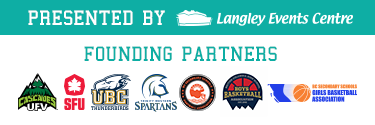
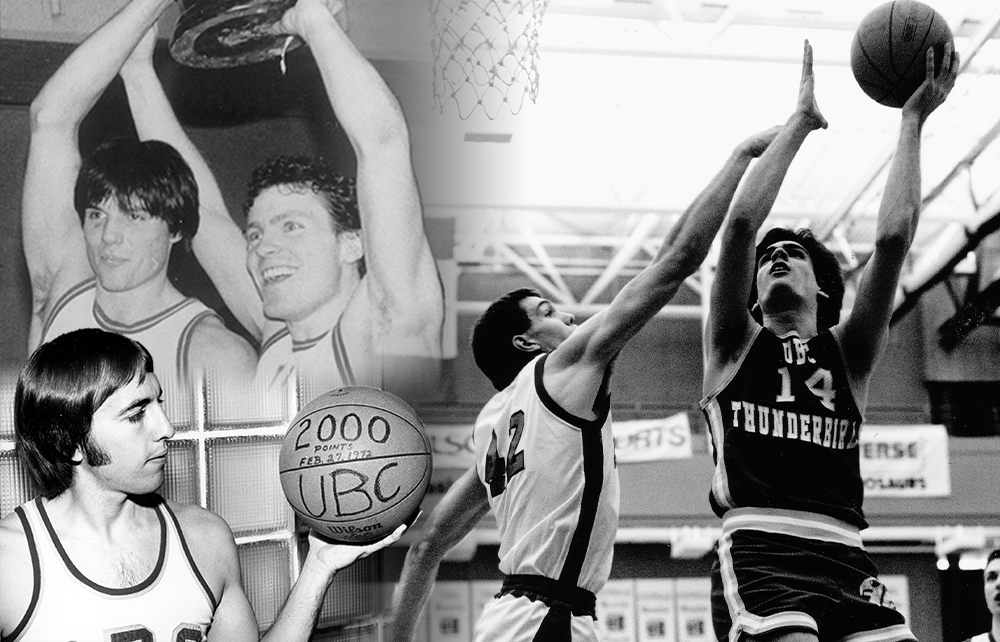
Excellent article. I really enjoyed it, Howard.
Thanks
What a great initiative by Kevin and insightful article by you Howard more Canadian universities should be looking to tell their stories. Congratulations on a job well done.